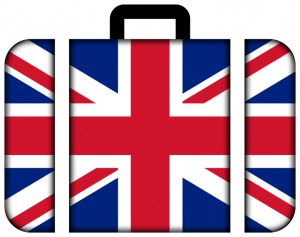 A cluttered desk equals a cluttered mind, right? Not necessarily. You can be just as productive with a messy desk as you can be with a clean one – as long as you’re organised! Whilst TikTok, Instagram, and interior influencers like Marie Kondo might tell you that less is more, many office workers simply can’t afford to be minimalists when it comes to their workstations. In this blog post, we’ll discuss 28 clever desk organisation ideas for maximum efficiency. Whether you’re looking to fully optimise your workspace or just want some new ideas, we’ve got you covered! So let’s get started!
A cluttered desk equals a cluttered mind, right? Not necessarily. You can be just as productive with a messy desk as you can be with a clean one – as long as you’re organised! Whilst TikTok, Instagram, and interior influencers like Marie Kondo might tell you that less is more, many office workers simply can’t afford to be minimalists when it comes to their workstations. In this blog post, we’ll discuss 28 clever desk organisation ideas for maximum efficiency. Whether you’re looking to fully optimise your workspace or just want some new ideas, we’ve got you covered! So let’s get started!
-
Recent Posts
- The Best Commuter Cities in the UK
- Romance at the Office: The Top 7 Major Cities in the UK to Find Love at Work!
- The Top 10 Best Startup Cities in the UK
- The Most Trustworthy Accent According to Customer Service Reviews: UK
- Office Secret Santa Etiquette – The dos and don’ts for a harmonious workplace gift exchange
Categories
- 4 Day Work Week
- Birmingham
- Brighton
- Bristol
- Business Centres
- Business Funding and Grants
- Business Locations
- Business Parks
- Business Support Services
- Business Tax
- Christmas
- Commercial Property
- COVID-19
- Coworking
- Economy
- Edinburgh
- Employees
- Flexible Office Space
- Glasgow
- Health and Safety
- Hot Desking
- London
- London Locations
- Luton
- Manchester
- Networking
- Newcastle
- News
- Nottingham
- Office Advice
- Office Design
- Office Grades
- Office Matters
- Office Requirements
- Pensions
- Property Law
- Reading
- Regeneration Projects
- Regeneration Projects and Plans
- Remote/Hybrid Work
- Salary Expectations
- Small Businesses
- Statistics
- The Changing Face of Britain's Cities
- Top Uk Cities For Business
- Top UK Cities For Business
- UK Airports for Business Travellers
- UK Industry
- UK Office Market
- UK Property Market
- UK Property Market 2014
- UK Tax Law
- Uncategorized
- Workplace Trends
Monthly Archives
- April 2025
- February 2025
- January 2025
- December 2024
- October 2024
- July 2024
- June 2024
- May 2024
- September 2023
- August 2023
- July 2023
- June 2023
- May 2023
- November 2022
- October 2022
- September 2022
- August 2022
- July 2022
- December 2021
- July 2019
- June 2019
- May 2019
- November 2018
- September 2017
- August 2017
- July 2017
- June 2017
- May 2017
- April 2017
- March 2017
- February 2017
- January 2017
- November 2016
- October 2016
- August 2016
- July 2016
- June 2016
- May 2016
- March 2016
- February 2016
- January 2016
- December 2015
- November 2015
- October 2015
- September 2015
- August 2015
- July 2015
- May 2015
- April 2015
- March 2015
- February 2015
- January 2015
- December 2014
- November 2014
- October 2014
- September 2014
- August 2014
- July 2014
- June 2014
- May 2014
- April 2014
- March 2014
- February 2014
- January 2014
- December 2013
- November 2013
- October 2013
- September 2013
- August 2013
- July 2013
- June 2013
- May 2013
- April 2013
- March 2013
- February 2013
- January 2013
- December 2012
- November 2012



 The events of 2020 caused substantial disruption to the commercial real estate sector. The office space market in particular was heavily impacted by lockdowns and other pandemic-related restrictions, still struggling to get back to pre-pandemic occupancy levels more than two years on.
The events of 2020 caused substantial disruption to the commercial real estate sector. The office space market in particular was heavily impacted by lockdowns and other pandemic-related restrictions, still struggling to get back to pre-pandemic occupancy levels more than two years on. If you are pregnant and working in the UK, you may be wondering how long your maternity leave will be. The good news is that UK law entitles most pregnant employees to a minimum of 52 weeks of maternity leave. This leave can be taken all at once, or split into several periods, as long as the total amount does not exceed 52 weeks. In this blog post, we will discuss the length of maternity leave, how to take maternity leave in the UK, the benefits often associated with this time away from work, and what rights you have as an employee.
If you are pregnant and working in the UK, you may be wondering how long your maternity leave will be. The good news is that UK law entitles most pregnant employees to a minimum of 52 weeks of maternity leave. This leave can be taken all at once, or split into several periods, as long as the total amount does not exceed 52 weeks. In this blog post, we will discuss the length of maternity leave, how to take maternity leave in the UK, the benefits often associated with this time away from work, and what rights you have as an employee.




 Cobalt Park is a large-scale office park and the largest of its kind in the United Kingdom. Preparation for this project began in 1996 and construction work started 2 years later. The project was completed in 2002 thanks to the joint effort of local developer Highbridge Properties, engineering firm Cundall, and Ryder Architecture.
Cobalt Park is a large-scale office park and the largest of its kind in the United Kingdom. Preparation for this project began in 1996 and construction work started 2 years later. The project was completed in 2002 thanks to the joint effort of local developer Highbridge Properties, engineering firm Cundall, and Ryder Architecture.